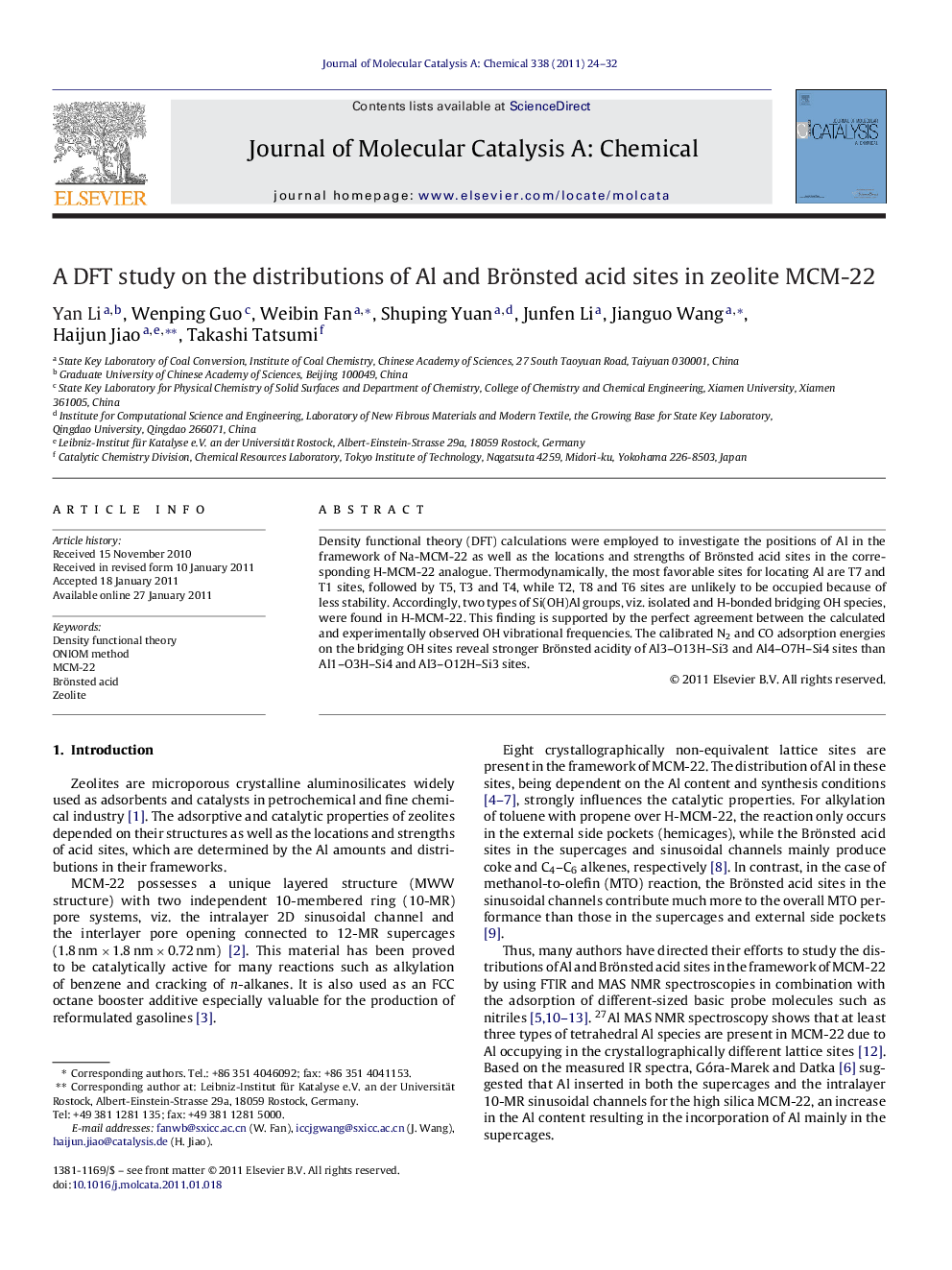| Article ID | Journal | Published Year | Pages | File Type |
|---|---|---|---|---|
| 66631 | Journal of Molecular Catalysis A: Chemical | 2011 | 9 Pages |
Density functional theory (DFT) calculations were employed to investigate the positions of Al in the framework of Na-MCM-22 as well as the locations and strengths of Brönsted acid sites in the corresponding H-MCM-22 analogue. Thermodynamically, the most favorable sites for locating Al are T7 and T1 sites, followed by T5, T3 and T4, while T2, T8 and T6 sites are unlikely to be occupied because of less stability. Accordingly, two types of Si(OH)Al groups, viz. isolated and H-bonded bridging OH species, were found in H-MCM-22. This finding is supported by the perfect agreement between the calculated and experimentally observed OH vibrational frequencies. The calibrated N2 and CO adsorption energies on the bridging OH sites reveal stronger Brönsted acidity of Al3–O13H–Si3 and Al4–O7H–Si4 sites than Al1–O3H–Si4 and Al3–O12H–Si3 sites.
Graphical abstractFigure optionsDownload full-size imageDownload high-quality image (237 K)Download as PowerPoint slideResearch highlights► Framework Al distribution in MCM-22 was studied with Na+ as counter-cation. ► The most probable sites for locating Al are T7 and T1, while T2, T8 and T6 are much less stable. ► Both isolated and H-bonded Si–OH–Al species were contained in H-MCM-22. The calculated OH frequencies agree well with the experimentally observed values. ► Al3–O13H–Si3 and Al4–O7H–Si4 show stronger acidity than Al1–O3H–Si4 and Al3–O12H–Si3.
